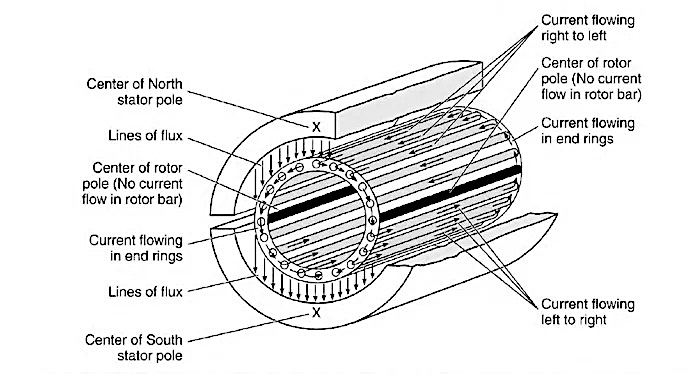What is a Squirrel Cage Induction Motor?
Squirrel cage induction motor is the simplest and most widely used type of asynchronous motor. Its rotor coil is cast aluminum and shaped like a squirrel cage, so it is called a "squirrel cage motor". These motors are a specific kind of induction motor, which uses the electromagnetic induction effect to transform electrical current into rotational energy. This article will explain the principles of squirrel cage motors, their specifications, and what kinds of applications they are used for. This way, we can make informed choices when choosing the right motor.
What is Squirrel Cage Induction Motor?
A 3 phase squirrel cage induction motor is a type of 3-phase induction motor which functions based on the principle of electromagnetism. It is called a "squirrel cage" motor because the rotor inside of it looks like a squirrel cage.
This rotor is a cylinder of steel laminations, with highly conductive metal (typically aluminum or copper) embedded into its surface. When an alternating current is run through the stator windings, a rotating magnetic field is produced.
This induces a current in the rotor winding, which produces its own magnetic field. The interaction of the magnetic fields produced by the stator and rotor windings produces torque on the squirrel cage rotor.
One big advantage of a squirrel cage motor is how easily you can change its speed-torque characteristics. This can be done by simply adjusting the shape of the bars in the rotor. Squirrel cage induction motors are used a lot in the industry – as they are reliable, self-starting, and easy to adjust.

Squirrel Cage Induction Motor Working Principle
In essence, squirrel cage motors work no differently than most other induction motors and only differ in the specific interaction between rotor and stator. Our article all about induction motors contains a discussion of the principal laws behind all induction motors and gives an understanding of how motion is created from magnetism.
Squirrel cage motors maximize electromagnetic induction by utilizing rotor bars to interact with the stator’s EMF. The stator usually contains windings of wire which carry an AC current; this current changes in sync with a sinusoidal curve which changes the current direction in the wire windings. When the current oscillates, the generated EMF will follow suit, and in certain arrangements will cause it to “rotate” with a frequency similar to the AC frequency. This rotating EMF produces an opposing voltage and EMF in the rotor bars, thus pushing the rotor around, generating rotational motion.
This rotor does not spin at the exact frequency of the AC current and is why squirrel cage motors (as well as other induction motors) are considered asynchronous. There is always some loss, or “slip”, between the AC frequency and the rotational frequency of the shaft, and this is a consequence of why the rotor rotates in the first place. If the rotor were to spin at the same frequency, then the magnitude of the force on the rotor bars would equal zero, thus creating no motion. The rotor must always be slower to feel the electromagnetic induction effect as if the rotor is playing a constant game of magnetic “catch-up”.
Squirrel Cage Motor Specifications
This article explains the specifications for all types of induction motors and is a good place to see all the different induction motor characteristics. This article will focus on what needs to be specified for squirrel cage induction motors, which mainly involve phase. Since these motors are massively popular, NEMA and the IEC have made standardized classes of squirrel cage motors based on their speed-torque characteristics.
Phase type
Induction motors can be driven by a single-phase (one AC frequency) or poly phases (multiple AC frequencies) depending upon the input power supply. Some of the most common types of squirrel cage motor use three phases, meaning the input current is three identical AC frequencies, split by 120 degrees of phase. Three-phase motors are self-starting, meaning the only necessary input is a starting voltage and makes these motors essentially plug-and-play. Single-phase motors are also common, but they are not self-starting and require some initial “shove”. This is because one AC frequency is not enough to create a truly “rotating” EMF, and some compensation must be done to simulate the rotating field. This can be done with starters, which can be capacitors, split phases, or other components. More information on starters can be read in our product page on the types of motor starters.
Application of Squirrel Cage Induction Motor
Squirrel cage induction motors are commonly used in many industrial applications. They are particularly suited for applications where the motor must maintain a constant speed, be self-starting, or there is a desire for low maintenance.
These motors are commonly used in:
- Centrifugal pumps
- Industrial drives (e.g. to run conveyor belts)
- Large blowers and fans
- Machine tools
- Lathes and other turning equipment

